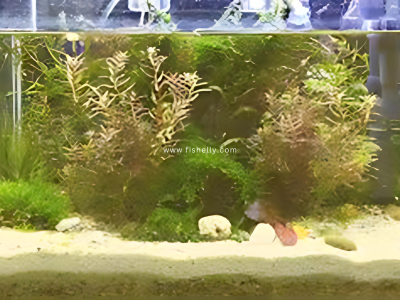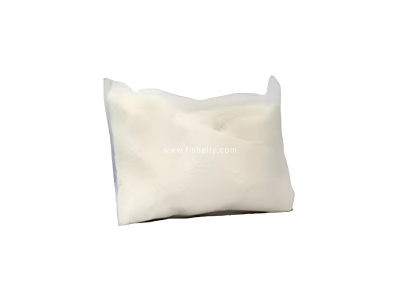Activated Carbon in Aquariums: Benefits & Best Practices
Activated carbon keeps aquariums clean by removing toxins, odors, and discoloration. Learn its benefits, proper usage, and best practices for clear water.
Table of Contents
- What is Activated Carbon?
- Bacteria and Chemicals Removed by Activated Carbon
- Benefits of Using Activated Carbon in Aquariums
- How to Apply Activated Carbon to an Aquarium
- When Not to Use Activated Carbon
- Alternative Filtration Methods
- Faq
- Conclusion
Aquarium enthusiasts often seek the best ways to maintain a clean and healthy aquatic environment. One of the most effective methods for improving water quality is using activated carbon. This powerful filtration medium helps remove impurities, odors, discoloration, and toxins from the water.

What is Activated Carbon?
Activated carbon is a specially treated carbon with a very porous structure, which makes it a great adsorbent. It is manufactured by heating up materials rich in carbon, like coconut shells or coal, at extremely high temperatures, with the result being a large surface area for holding impurities. The porous structure enables the activated carbon to adsorb and flush away different types of contaminants in aquarium water.

Bacteria and Chemicals Removed by Activated Carbon
Activated carbon is effective in removing harmful bacteria such as Escherichia coli (E. coli), Vibrio cholerae, and Pseudomonas aeruginosa from the aquarium water. Additionally, it eliminates various chemicals, including chlorine, chloramine, tannins, phenols, and heavy metals. Through adsorption, activated carbon reacts with these chemicals by trapping them in its porous structure, preventing them from affecting fish and aquatic life.
Benefits of Using Activated Carbon in Aquariums
Removes Toxins and Impurities: Activated carbon efficiently eliminates organic impurities, chlorine, tannins, and heavy metals, leaving the water cleaner.

Eliminates Odors: It absorbs unpleasant odors from decaying organic matter, maintaining a fresh aquarium.
Clears Water Discoloration: It eliminates tannins from driftwood and other materials that color the water yellow or brown.

Reduces Medication Residues: Once the fish has been treated with medication, activated carbon aids in the elimination of leftover chemicals to avoid damaging aquatic life.

Improves Water Clarity: By eliminating microscopic particles, it maintains the water crystal clear.

Reduces Algae Growth: It aids in the reduction of dissolved organic compounds that promote algae growth.

Supports Beneficial Bacteria: Even though it eliminates impurities, it does not disrupt the biological filtration system of the tank.

How to Apply Activated Carbon to an Aquarium
1. Selecting the Best Form of Activated Carbon Activated carbon is present in various forms, like granular, pelletized, or powdered. The most used form in aquariums is granular activated carbon (GAC) since it is effective for filtration with a low tendency for clogging.

2. Optimal Position within the Filter System To achieve optimum efficiency, activated carbon must be installed in the filter media chamber where water is passed through it on a constant basis. Standard locations are:
Canister Filters: Install the carbon in a media bag within the filter trays.

Hang-on-Back (HOB) Filters: Incorporate carbon within the filter cartridge or an individual media bag.

Internal Filters: Some internal filters have special carbon media compartments.

Sponge Filters: Activated carbon can be used, albeit not as the norm, in a secondary media bag close to the sponge.

3. Activated Carbon Amount to Use The amount of activated carbon required depends on the size of the aquarium:
• 10-gallon tank: ~20 grams (2 tablespoons)
• 20-gallon tank: ~40 grams (4 tablespoons)
• 50-gallon tank: ~100 grams (1 cup)
• 100-gallon tank: ~200 grams (2 cups) Adjust quantities based on water conditions and bio-load.
4. Rinsing Before Usage Activated carbon has dust particles that may fog the water. Rinse it well with dechlorinated water until the water is clear before adding it to the filter.
5. Replacing Activated Carbon Activated carbon will get saturated with time and stop working. Change it every 3 to 4 weeks for maximum filtration. If you observe discoloration of the water or the return of odors, it is time to replace the carbon.
When Not to Use Activated Carbon
Although activated carbon is useful, there are situations when it should be avoided:
During Medication Treatment: Activated carbon can trap medications, making them less effective.

Planted Tanks with Fertilizers: It can strip trace elements necessary for plant growth.

Stable Aquariums: If your tank has a stable ecosystem with little impurities, carbon might not be needed.

Alternative Filtration Methods
If activated carbon is not ideal for your setup, try these alternatives:
Seachem Purigen: Synthetic adsorbent which eliminates organic waste without removing trace elements.

Zeolite: Can be used for freshwater aquariums to remove ammonia.

Chemical Media (e.g., Phosphate Removers): Reduces phosphate content and hence prevents algae growth.

Faq
1. What does activated carbon do in an aquarium?
Activated carbon removes toxins, impurities, odors, and discoloration from aquarium water, making it cleaner and clearer.
2. Is activated carbon necessary for my aquarium?
Not always. If your tank has stable water conditions and minimal impurities, it may not be necessary. However, it is beneficial for improving water clarity and removing toxins.
3. How often should I replace activated carbon?
Activated carbon should be replaced every 3 to 4 weeks, or when water becomes cloudy or odors return.
4. Can I use activated carbon in any type of aquarium filter?
Yes, activated carbon can be used in canister filters, hang-on-back (HOB) filters, internal filters, and sponge filters with a media bag.
5. How much activated carbon should I use?
A general rule is 1 cup (about 100 grams) per 50 gallons of water. However, follow the manufacturer’s recommendations for best results.
6. Should I rinse activated carbon before using it?
Yes, rinse activated carbon with dechlorinated water before adding it to your filter to remove dust that could cloud the water.
7. Will activated carbon remove medication from the water?
Yes, activated carbon can absorb medications, so it should be removed during treatment and added back afterward to clear any residue.
8. Can activated carbon remove algae?
While it does not kill algae directly, it removes organic compounds that contribute to algae growth, helping to keep the tank clean.
9. Does activated carbon affect beneficial bacteria in the tank?
No, activated carbon does not harm the beneficial bacteria responsible for biological filtration.
10. Can I use activated carbon in a planted aquarium?
It is not recommended in heavily planted tanks using fertilizers, as it can absorb trace elements essential for plant growth.
11. What are alternatives to activated carbon?
Alternatives include Seachem Purigen (removes organic waste without stripping trace elements), zeolite (ammonia removal), and phosphate removers (algae prevention).
12. Can I reuse activated carbon after rinsing?
No, once activated carbon becomes saturated, it cannot be reactivated and should be replaced with fresh carbon.
13. Does activated carbon work in both freshwater and saltwater tanks?
Yes, it is effective in both freshwater and saltwater aquariums for maintaining water clarity and purity.
14. Why is my water still cloudy after using activated carbon?
If the water remains cloudy, check if the carbon is expired, insufficient, or incorrectly placed in the filter. Other causes like bacterial blooms may also be responsible.
15. Can activated carbon remove bad smells from my tank?
Yes, it absorbs odors caused by decaying organic matter, keeping your aquarium smelling fresh.
Conclusion
Activated carbon is a great facility for water clearness and health in aquariums. If selected, positioned, and replaced by you properly, you can achieve a healthy and clean aquatic set-up. Monitor its impact though, and scale down use if your aquarium calls for it. Regardless of the type of your aquarium being fresh or salt water, activated carbon can really work wonders for its health and hygiene.
Have questions? Drop a comment below! #fishelly_official Fish Community






